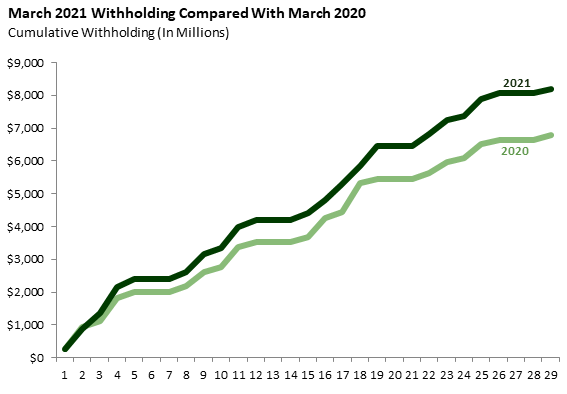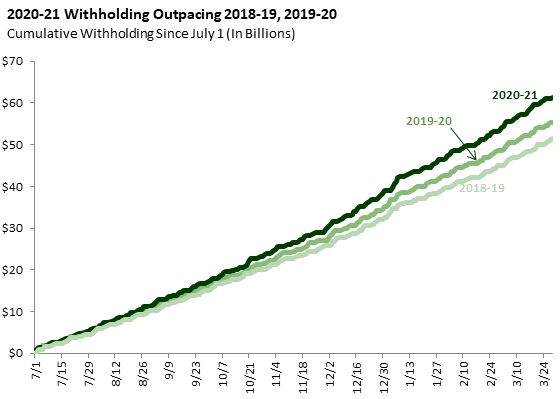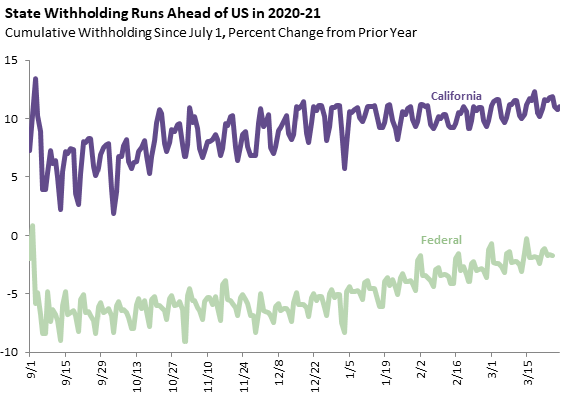Bottom Line: California income tax withholding collections in March to date are 20.3 percent above March 2020. Total withholding to date in fiscal 2020-21 is 11.0 percent above the same period in 2019-20.
California employers are required to make regular income tax withholding payments for their employees, which can provide a real-time indication of the direction and magnitude of the aggregate change in the employers’ payrolls. Most withholding payments are for employees’ wages and salaries, but withholding is also due on bonuses and stock options received by employees. We caution against giving too much weight to withholding numbers in any given month, as they often include one-time payments (say, for taxes on stock options associated with initial public offerings) that are unlikely to recur. Nonetheless, given the pace and severity of the shift in the state’s economy resulting from the COVID-19 pandemic, tracking monthly withholding is a useful way to assess the state’s evolving economic situation.
The first graph shows that withholding payments through 21 collection days (29 calendar days) in March 2021 are up 20.3 percent from the first 21 collection days in March 2020. The effects of the pandemic began to show up in the withholding data in the second half of March 2020. This month also saw the initial public offerings of 13 California companies, the largest of which was Roblox with an initial valuation of $30 billion. Other IPOs of companies valued at $1 billion or more included Vizio, ChargePoint, Duckhorn Wine, and ThredUp. In contrast, no California companies went public in March 2020.
The second graph compares total withholding collections to date in fiscal year 2020-21 (which started on July 1, 2020) to the two previous years. As of March 29, cumulative collections were $6.1 billion (11.0 percent) ahead of 2019-20 and $9.8 billion (19.1 percent) ahead of 2018-19.
The final graph compares the state’s year over year percent change in cumulative withholding in 2020-21 to the nation’s withholding from the federal income tax, and shows that state collections have maintained a faster pace for months. While California’s economy has been hurt at least as badly by the recession as the national economy has, its withholding collections have likely held up better because its income tax falls more heavily on the higher-paid workers who have experienced fewer employment losses than their lower-paid counterparts.



